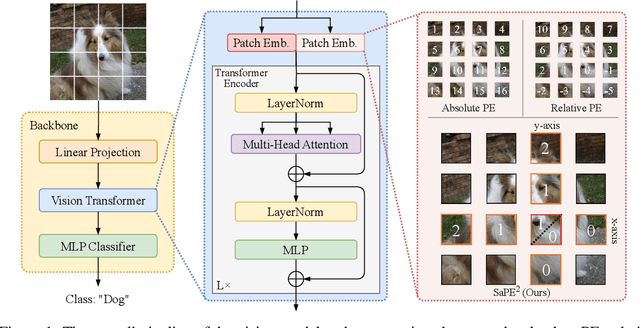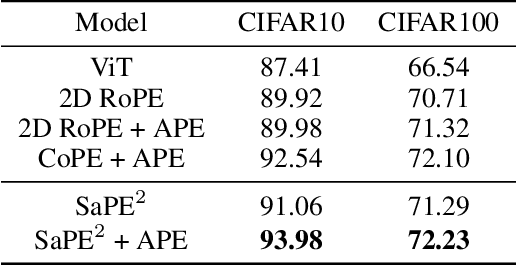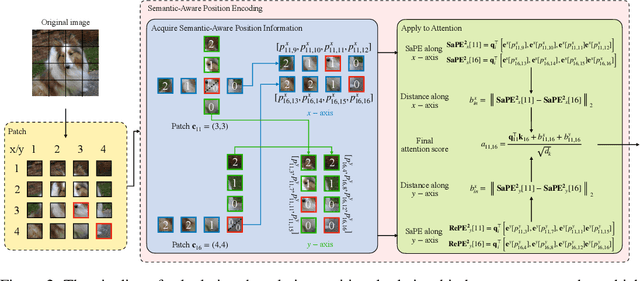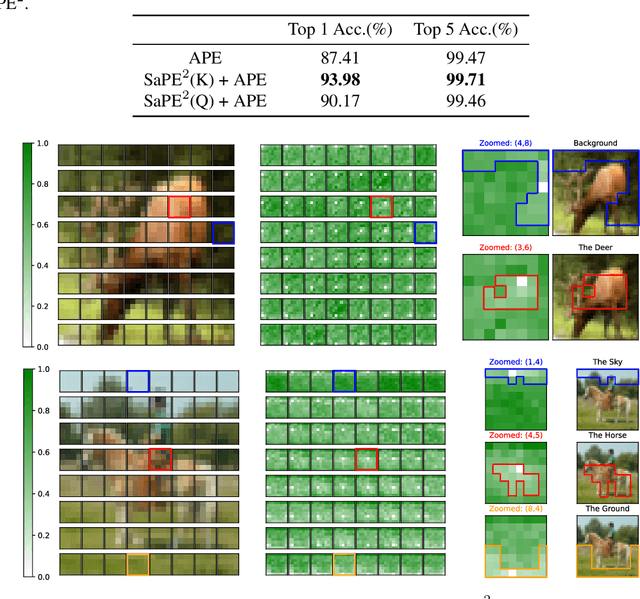Yuhui Zhang
AttentionDrag: Exploiting Latent Correlation Knowledge in Pre-trained Diffusion Models for Image Editing
Jun 16, 2025Abstract:Traditional point-based image editing methods rely on iterative latent optimization or geometric transformations, which are either inefficient in their processing or fail to capture the semantic relationships within the image. These methods often overlook the powerful yet underutilized image editing capabilities inherent in pre-trained diffusion models. In this work, we propose a novel one-step point-based image editing method, named AttentionDrag, which leverages the inherent latent knowledge and feature correlations within pre-trained diffusion models for image editing tasks. This framework enables semantic consistency and high-quality manipulation without the need for extensive re-optimization or retraining. Specifically, we reutilize the latent correlations knowledge learned by the self-attention mechanism in the U-Net module during the DDIM inversion process to automatically identify and adjust relevant image regions, ensuring semantic validity and consistency. Additionally, AttentionDrag adaptively generates masks to guide the editing process, enabling precise and context-aware modifications with friendly interaction. Our results demonstrate a performance that surpasses most state-of-the-art methods with significantly faster speeds, showing a more efficient and semantically coherent solution for point-based image editing tasks.
Can Large Language Models Match the Conclusions of Systematic Reviews?
May 28, 2025Abstract:Systematic reviews (SR), in which experts summarize and analyze evidence across individual studies to provide insights on a specialized topic, are a cornerstone for evidence-based clinical decision-making, research, and policy. Given the exponential growth of scientific articles, there is growing interest in using large language models (LLMs) to automate SR generation. However, the ability of LLMs to critically assess evidence and reason across multiple documents to provide recommendations at the same proficiency as domain experts remains poorly characterized. We therefore ask: Can LLMs match the conclusions of systematic reviews written by clinical experts when given access to the same studies? To explore this question, we present MedEvidence, a benchmark pairing findings from 100 SRs with the studies they are based on. We benchmark 24 LLMs on MedEvidence, including reasoning, non-reasoning, medical specialist, and models across varying sizes (from 7B-700B). Through our systematic evaluation, we find that reasoning does not necessarily improve performance, larger models do not consistently yield greater gains, and knowledge-based fine-tuning degrades accuracy on MedEvidence. Instead, most models exhibit similar behavior: performance tends to degrade as token length increases, their responses show overconfidence, and, contrary to human experts, all models show a lack of scientific skepticism toward low-quality findings. These results suggest that more work is still required before LLMs can reliably match the observations from expert-conducted SRs, even though these systems are already deployed and being used by clinicians. We release our codebase and benchmark to the broader research community to further investigate LLM-based SR systems.
NegVQA: Can Vision Language Models Understand Negation?
May 28, 2025Abstract:Negation is a fundamental linguistic phenomenon that can entirely reverse the meaning of a sentence. As vision language models (VLMs) continue to advance and are deployed in high-stakes applications, assessing their ability to comprehend negation becomes essential. To address this, we introduce NegVQA, a visual question answering (VQA) benchmark consisting of 7,379 two-choice questions covering diverse negation scenarios and image-question distributions. We construct NegVQA by leveraging large language models to generate negated versions of questions from existing VQA datasets. Evaluating 20 state-of-the-art VLMs across seven model families, we find that these models struggle significantly with negation, exhibiting a substantial performance drop compared to their responses to the original questions. Furthermore, we uncover a U-shaped scaling trend, where increasing model size initially degrades performance on NegVQA before leading to improvements. Our benchmark reveals critical gaps in VLMs' negation understanding and offers insights into future VLM development. Project page available at https://yuhui-zh15.github.io/NegVQA/.
TULiP: Test-time Uncertainty Estimation via Linearization and Weight Perturbation
May 22, 2025Abstract:A reliable uncertainty estimation method is the foundation of many modern out-of-distribution (OOD) detectors, which are critical for safe deployments of deep learning models in the open world. In this work, we propose TULiP, a theoretically-driven post-hoc uncertainty estimator for OOD detection. Our approach considers a hypothetical perturbation applied to the network before convergence. Based on linearized training dynamics, we bound the effect of such perturbation, resulting in an uncertainty score computable by perturbing model parameters. Ultimately, our approach computes uncertainty from a set of sampled predictions. We visualize our bound on synthetic regression and classification datasets. Furthermore, we demonstrate the effectiveness of TULiP using large-scale OOD detection benchmarks for image classification. Our method exhibits state-of-the-art performance, particularly for near-distribution samples.
A 2D Semantic-Aware Position Encoding for Vision Transformers
May 14, 2025



Abstract:Vision transformers have demonstrated significant advantages in computer vision tasks due to their ability to capture long-range dependencies and contextual relationships through self-attention. However, existing position encoding techniques, which are largely borrowed from natural language processing, fail to effectively capture semantic-aware positional relationships between image patches. Traditional approaches like absolute position encoding and relative position encoding primarily focus on 1D linear position relationship, often neglecting the semantic similarity between distant yet contextually related patches. These limitations hinder model generalization, translation equivariance, and the ability to effectively handle repetitive or structured patterns in images. In this paper, we propose 2-Dimensional Semantic-Aware Position Encoding ($\text{SaPE}^2$), a novel position encoding method with semantic awareness that dynamically adapts position representations by leveraging local content instead of fixed linear position relationship or spatial coordinates. Our method enhances the model's ability to generalize across varying image resolutions and scales, improves translation equivariance, and better aggregates features for visually similar but spatially distant patches. By integrating $\text{SaPE}^2$ into vision transformers, we bridge the gap between position encoding and perceptual similarity, thereby improving performance on computer vision tasks.
Comet: Accelerating Private Inference for Large Language Model by Predicting Activation Sparsity
May 12, 2025Abstract:With the growing use of large language models (LLMs) hosted on cloud platforms to offer inference services, privacy concerns about the potential leakage of sensitive information are escalating. Secure multi-party computation (MPC) is a promising solution to protect the privacy in LLM inference. However, MPC requires frequent inter-server communication, causing high performance overhead. Inspired by the prevalent activation sparsity of LLMs, where most neuron are not activated after non-linear activation functions, we propose an efficient private inference system, Comet. This system employs an accurate and fast predictor to predict the sparsity distribution of activation function output. Additionally, we introduce a new private inference protocol. It efficiently and securely avoids computations involving zero values by exploiting the spatial locality of the predicted sparse distribution. While this computation-avoidance approach impacts the spatiotemporal continuity of KV cache entries, we address this challenge with a low-communication overhead cache refilling strategy that merges miss requests and incorporates a prefetching mechanism. Finally, we evaluate Comet on four common LLMs and compare it with six state-of-the-art private inference systems. Comet achieves a 1.87x-2.63x speedup and a 1.94x-2.64x communication reduction.
MicroVQA: A Multimodal Reasoning Benchmark for Microscopy-Based Scientific Research
Mar 17, 2025Abstract:Scientific research demands sophisticated reasoning over multimodal data, a challenge especially prevalent in biology. Despite recent advances in multimodal large language models (MLLMs) for AI-assisted research, existing multimodal reasoning benchmarks only target up to college-level difficulty, while research-level benchmarks emphasize lower-level perception, falling short of the complex multimodal reasoning needed for scientific discovery. To bridge this gap, we introduce MicroVQA, a visual-question answering (VQA) benchmark designed to assess three reasoning capabilities vital in research workflows: expert image understanding, hypothesis generation, and experiment proposal. MicroVQA consists of 1,042 multiple-choice questions (MCQs) curated by biology experts across diverse microscopy modalities, ensuring VQA samples represent real scientific practice. In constructing the benchmark, we find that standard MCQ generation methods induce language shortcuts, motivating a new two-stage pipeline: an optimized LLM prompt structures question-answer pairs into MCQs; then, an agent-based `RefineBot' updates them to remove shortcuts. Benchmarking on state-of-the-art MLLMs reveal a peak performance of 53\%; models with smaller LLMs only slightly underperform top models, suggesting that language-based reasoning is less challenging than multimodal reasoning; and tuning with scientific articles enhances performance. Expert analysis of chain-of-thought responses shows that perception errors are the most frequent, followed by knowledge errors and then overgeneralization errors. These insights highlight the challenges in multimodal scientific reasoning, showing MicroVQA is a valuable resource advancing AI-driven biomedical research. MicroVQA is available at https://huggingface.co/datasets/jmhb/microvqa, and project page at https://jmhb0.github.io/microvqa.
Video Action Differencing
Mar 10, 2025Abstract:How do two individuals differ when performing the same action? In this work, we introduce Video Action Differencing (VidDiff), the novel task of identifying subtle differences between videos of the same action, which has many applications, such as coaching and skill learning. To enable development on this new task, we first create VidDiffBench, a benchmark dataset containing 549 video pairs, with human annotations of 4,469 fine-grained action differences and 2,075 localization timestamps indicating where these differences occur. Our experiments demonstrate that VidDiffBench poses a significant challenge for state-of-the-art large multimodal models (LMMs), such as GPT-4o and Qwen2-VL. By analyzing failure cases of LMMs on VidDiffBench, we highlight two key challenges for this task: localizing relevant sub-actions over two videos and fine-grained frame comparison. To overcome these, we propose the VidDiff method, an agentic workflow that breaks the task into three stages: action difference proposal, keyframe localization, and frame differencing, each stage utilizing specialized foundation models. To encourage future research in this new task, we release the benchmark at https://huggingface.co/datasets/jmhb/VidDiffBench and code at http://jmhb0.github.io/viddiff.
EquiBench: Benchmarking Code Reasoning Capabilities of Large Language Models via Equivalence Checking
Feb 18, 2025



Abstract:Equivalence checking, i.e., determining whether two programs produce identical outputs for all possible inputs, underpins a broad range of applications, including software refactoring, testing, and optimization. We present the task of equivalence checking as a new way to evaluate the code reasoning abilities of large language models (LLMs). We introduce EquiBench, a dataset of 2400 program pairs spanning four programming languages and six equivalence categories. These pairs are systematically generated through program analysis, compiler scheduling, and superoptimization, covering nontrivial structural transformations that demand deep semantic reasoning beyond simple syntactic variations. Our evaluation of 17 state-of-the-art LLMs shows that OpenAI o3-mini achieves the highest overall accuracy of 78.0%. In the most challenging categories, the best accuracies are 62.3% and 68.8%, only modestly above the 50% random baseline for binary classification, indicating significant room for improvement in current models' code reasoning capabilities.
Temporal Preference Optimization for Long-Form Video Understanding
Jan 23, 2025



Abstract:Despite significant advancements in video large multimodal models (video-LMMs), achieving effective temporal grounding in long-form videos remains a challenge for existing models. To address this limitation, we propose Temporal Preference Optimization (TPO), a novel post-training framework designed to enhance the temporal grounding capabilities of video-LMMs through preference learning. TPO adopts a self-training approach that enables models to differentiate between well-grounded and less accurate temporal responses by leveraging curated preference datasets at two granularities: localized temporal grounding, which focuses on specific video segments, and comprehensive temporal grounding, which captures extended temporal dependencies across entire video sequences. By optimizing on these preference datasets, TPO significantly enhances temporal understanding while reducing reliance on manually annotated data. Extensive experiments on three long-form video understanding benchmarks--LongVideoBench, MLVU, and Video-MME--demonstrate the effectiveness of TPO across two state-of-the-art video-LMMs. Notably, LLaVA-Video-TPO establishes itself as the leading 7B model on the Video-MME benchmark, underscoring the potential of TPO as a scalable and efficient solution for advancing temporal reasoning in long-form video understanding. Project page: https://ruili33.github.io/tpo_website.
 Add to Chrome
Add to Chrome Add to Firefox
Add to Firefox Add to Edge
Add to Edge